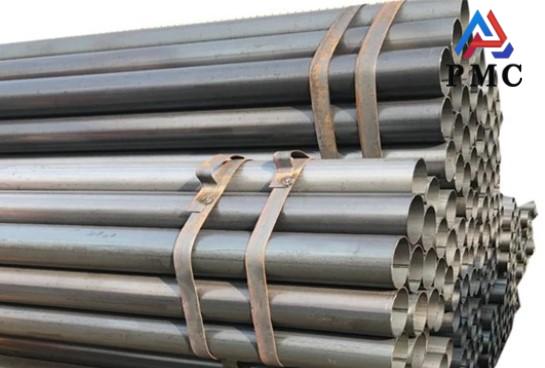
Carbon Steel Pipe Grade
Carbon steel pipes are the "universal pipe" in the industrial field, but different grades of carbon steel pipes vary significantly in strength, toughness, and weldability. From Q235 steel for low-pressure water transmission, to ASTM A106 Grade C for high-pressure conditions, to S355J2H steel for low-temperature resistance, the grade directly determines the application scenarios of the pipe.
Understanding the logic behind carbon steel pipe grading not only helps you avoid material mismatches but also helps you balance project safety and costs. This article breaks down the core characteristics of mainstream carbon steel pipe grades to help you quickly find the right product for your needs.
Dimensions of carbon steel pipe grades
The grading of carbon steel pipes has strict standards, which are mainly defined by the key dimensions of chemical composition, application and quality grade. Each dimension has an important impact on the performance and application of carbon steel pipes.
Classification by chemical composition
1. Low carbon steel (carbon content <0.25%) has low strength and hardness, good plastic weldability, and is used for thin plates, pipes, construction steel beams, etc.
2. Medium carbon steel (carbon content 0.25%-0.6%) has higher strength and hardness, but slightly weaker plasticity and toughness. After heat treatment, it is suitable for mechanical parts such as shafts and gears.
3. High carbon steel (carbon content > 0.6%) has excellent strength, hardness and wear resistance, but poor plasticity and toughness. It is mainly used in the manufacture of tools such as cutting tools and molds.
Classification by use
1. Carbon structural steel: mostly used for engineering structures and mechanical parts, used in hot-rolled state, with strength and toughness adapted to conventional needs. Representative models include Q235 and Q345, commonly found in construction steel beams, bridge structures, and mechanical foundation parts.
2. Carbon tool steel: Specially made for cutting tools, molds, and measuring tools. It begins with "T" and is identified by a number (the number represents the average carbon content in thousandths, such as T8 containing 0.8% carbon). It has high hardness and wear resistance, and its cutting and performance are improved after heat treatment.
Classification by quality level
1. Ordinary quality carbon steel: It has high sulfur (≤0.050%) and phosphorus (≤0.045%) impurities, low price, and is suitable for general engineering/mechanical parts with low performance requirements. It is only marked with the steel number (such as Q235A).
2. High-quality carbon steel: sulfur and phosphorus ≤ 0.035%, better performance, used for parts with high performance requirements, with "high-quality" added after the steel number (such as 45 high-quality carbon structural steel).
3. High-grade high-quality carbon steel: sulfur and phosphorus ≤ 0.025%, excellent mechanical and processing properties, suitable for high-standard parts such as aerospace, precision instruments, etc., with "A" added after the steel number (such as 38CrMoAlA).

International mainstream standards: carbon steel pipe core grade
1. European Standards (EN): EN 10210/EN 10025 as the core
S235 series (such as S235JRH, S235J0H): low carbon steel, yield strength ≥235MPa, carbon content ≤0.20%, excellent plasticity and weldability, suitable for general structures (such as building supports, low-pressure pipelines), J0 grade can withstand low-temperature impact of 0℃.
S275 series (such as S275J2H): medium-low carbon steel, yield strength ≥275MPa, higher strength than S235, suitable for medium load scenarios (such as equipment frames, small and medium-sized bridges), J2 grade supports low-temperature impact of -20℃.
S355 series (such as S355J2H, S355K2H): medium carbon steel, yield strength ≥355MPa, comprehensive strength and toughness, used for heavy-load structures (such as high-pressure pipelines, crane main beams), K2 grade can withstand low temperatures of -40℃.
2. American Standard (ASTM): Segmented by Application
ASTM A36: Low carbon steel, yield strength ≥250MPa, tensile strength 400-550MPa, no low-temperature impact requirements, strong versatility, suitable for ordinary pipes and mechanical parts.
ASTM A53: Carbon steel pipe for conveying fluids, divided into A/B grades, Grade A yield strength ≥250MPa (low carbon), Grade B ≥290MPa (medium-low carbon), used for water, oil, and steam transportation.
ASTM A106: Carbon steel pipe for high-temperature and high-pressure pipelines, divided into A/B/C grades. Grade C has a yield strength of ≥415MPa (medium carbon steel) and is suitable for high-temperature pipelines in power plants and refineries.
Core basis for grade selection
Pressure Requirements: For low pressure, choose Q235 or 10# steel; for medium and high pressure, choose Q345, S355, or ASTM A106 C.
Ambient Temperature: For room temperature, choose JR/A grade; for low temperature (-20°C), choose J2/D grade; for extreme cold (-40°C), choose K2 grade.
Processing Requirements: For welding, choose low-carbon steel (Q235 or S235); for high strength, choose carbon steel (Q345 or S355).
Conclusion
Understanding carbon steel pipe grades is crucial for practical applications. From basic understanding to grade classification, to grades in common standards and selection methods, each link is closely linked. Different grades of carbon steel pipe have unique characteristics in chemical composition, application, and quality, adapting to diverse industrial needs. In actual projects, the appropriate grade of carbon steel pipe must be selected based on factors such as specific pressure requirements, cost-effectiveness, and environmental conditions. This ensures project safety and stability while achieving reasonable cost control, maximizing the value of carbon steel pipe in various fields.
Read more: Carbon Steel Pipe vs Mild Steel Pipe
- 【Prev】 : Factors Affecting the High Strength of SMLS Pipes
- 【Next】 : ERW Pipe vs Spiral Pipe


